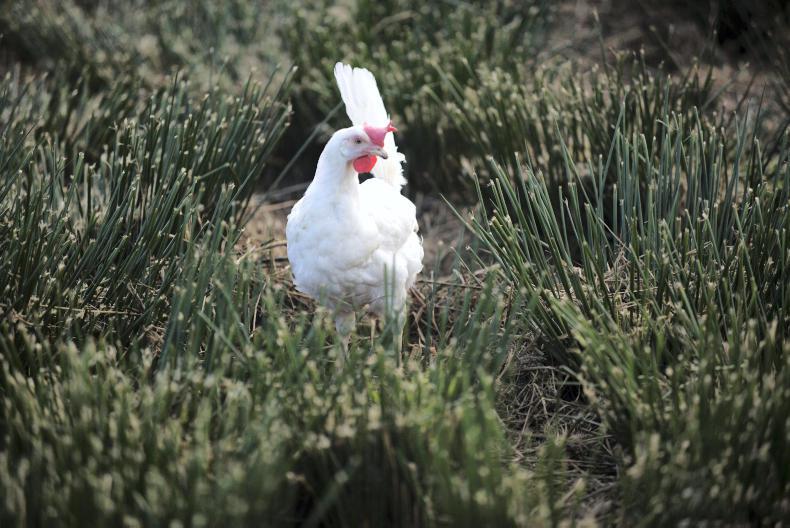“As of today 25 April 2017, it is no longer a legal requirement to confine/house poultry and other birds as a precautionary measure against Avian Influenza (bird flu),” the Department said in a statement.
Restrictions were introduced on 23 December to avoid the transmission of the H5N8 virus, which is lethal to birds, from wild animals to farmed flocks.
“The decision to lift the confinement requirement is based on a number of parameters which indicate a reducing risk of an avian influenza incursion – including the fact that no case of bird flu has been confirmed here in wild birds for a period of eight weeks, reducing numbers of migratory waterfowl and increasing environmental temperatures and daylight hours,” the Department explained.
Free-range flocks, which lost their status on St Patrick’s Day after 12 weeks indoors, can use the label again for eggs laid and birds slaughtered from this Monday.
Eggs that entered the processing chain before this date must still be labelled as “barn reared”.
The housing order was lifted on 17 March in Northern Ireland and gradually across Britain between the end of February and 13 March.
IFA poultry chairman Nigel Renaghan told the Irish Farmers Journal he was "ecstatic" about the lifting of restrictions earlier than the planned date of 30 April and described the management of the disease since it was found in wild brids last December as "a success story". "It is not having an impact on farmers," he said. "We had round tables with the Department and supermarkets ahead of this. Being proactive rather than reactive meant that we didn't have a case here."
Farm contamination led to the culling of millions of birds across Europe to halt the spread of the disease in recent months.
Read more on the lessons to be drawn from the past winter's bird flu outbreak in this week's Irish Farmers Journal.
Read more
Full coverage: bird flu
“As of today 25 April 2017, it is no longer a legal requirement to confine/house poultry and other birds as a precautionary measure against Avian Influenza (bird flu),” the Department said in a statement.
Restrictions were introduced on 23 December to avoid the transmission of the H5N8 virus, which is lethal to birds, from wild animals to farmed flocks.
“The decision to lift the confinement requirement is based on a number of parameters which indicate a reducing risk of an avian influenza incursion – including the fact that no case of bird flu has been confirmed here in wild birds for a period of eight weeks, reducing numbers of migratory waterfowl and increasing environmental temperatures and daylight hours,” the Department explained.
Free-range flocks, which lost their status on St Patrick’s Day after 12 weeks indoors, can use the label again for eggs laid and birds slaughtered from this Monday.
Eggs that entered the processing chain before this date must still be labelled as “barn reared”.
The housing order was lifted on 17 March in Northern Ireland and gradually across Britain between the end of February and 13 March.
IFA poultry chairman Nigel Renaghan told the Irish Farmers Journal he was "ecstatic" about the lifting of restrictions earlier than the planned date of 30 April and described the management of the disease since it was found in wild brids last December as "a success story". "It is not having an impact on farmers," he said. "We had round tables with the Department and supermarkets ahead of this. Being proactive rather than reactive meant that we didn't have a case here."
Farm contamination led to the culling of millions of birds across Europe to halt the spread of the disease in recent months.
Read more on the lessons to be drawn from the past winter's bird flu outbreak in this week's Irish Farmers Journal.
Read more
Full coverage: bird flu






 This is a subscriber-only article
This is a subscriber-only article










SHARING OPTIONS: